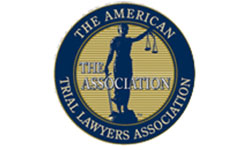Sexual abuse is a profound violation that disrupts a person’s sense of safety, trust, and autonomy. While the act itself is often committed by an individual, its impact is compounded when institutions—schools, churches, youth programs, medical providers, and other organizations—fail to prevent or address it. When we think about sexual abuse our firm looks not only at the specific acts perpetrated, but also at what the accountable institutions failed to do in response. The betrayal is often twofold: the abuser’s direct harm, and the institution’s silence, inaction, or cover-up.
At its core, sexual abuse includes any unwanted or non-consensual sexual act. This might involve physical contact, such as inappropriate touching or forced intercourse, but it also includes psychological or coercive behaviors that cross boundaries and exploit vulnerabilities. Many survivors are manipulated into compliance through grooming, emotional dependency, or the misuse of authority. Others are made to feel ashamed, confused, or powerless. Particularly in institutional settings, where perpetrators are trusted adults—teachers, clergy members, doctors, or coaches—the abuse can be disguised as care, discipline, or mentorship. In these cases, the lines of consent and understanding become dangerously blurred, especially for children and teens who may not yet have the language to name what is happening to them.
Legal Definition of Sexual Abuse
The legal system recognizes a broad spectrum of behaviors under the term “sexual abuse,” and definitions vary somewhat by jurisdiction. However, the law consistently affirms that when someone uses force, coercion, or manipulation to engage in sexual activity, it is abuse. In institutional cases, this understanding expands further. Institutions have legal and ethical responsibilities to protect the people under their care, and when they neglect those responsibilities—by failing to vet staff, ignoring complaints, or turning a blind eye to warning signs—they may be held civilly liable for the abuse that results.
In our work with survivors, we often uncover long histories of institutional failure. A school may have received multiple complaints about a teacher but taken no disciplinary action. A religious diocese may have moved clergy from parish to parish without ever informing new communities about prior allegations. A hospital may have dismissed concerns about a physician’s behavior because of his seniority or patient volume. These organizations often act to protect themselves—prioritizing reputation, revenue, or internal politics over the safety and dignity of those they serve. That choice has consequences, and we work to ensure they are held accountable for it.
One of the most important things to understand about civil sexual abuse litigation is that it is not just about punishing the individual abuser. In many of our cases, the individual has already retired, died, or avoided prosecution entirely. But the institution that harbored the abuse—sometimes for years or even decades—can still be brought to justice. Civil lawsuits allow survivors to expose what was known, when it was known, and what should have been done. This process often brings to light internal documents, policies, and communications that reveal not just negligence, but deliberate concealment and systemic dysfunction.
The pursuit of justice through a civil claim can be transformative. It allows sexual abuse survivors to regain agency, to speak out in a forum that respects and believes them, and to compel institutional change. Financial compensation is one part of this process, supporting access to therapy, recovery, and long-term stability. But the deeper value lies in what is uncovered and what is forced to change. Institutions may be required to overhaul training programs, establish third-party oversight, or publicly acknowledge their failure to prevent or respond to sexual abuse. Many of these reforms have only come about because brave survivors chose to come forward and take legal action.

















